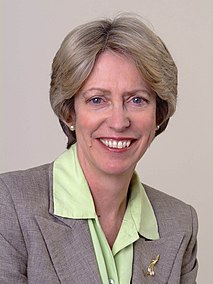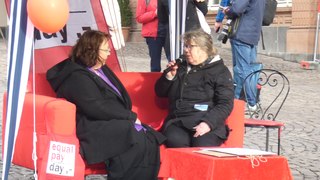| Rainey v Greater Glasgow Health Board | |
|---|---|
 | |
| Court | House of Lords |
| Citation(s) | [1987] IRLR 26 |
| Keywords | |
| Discrimination | |
Rainey v Greater Glasgow Health Board [1987] IRLR 26 is a UK labour law case concerning the justifications for unequal pay.
| Rainey v Greater Glasgow Health Board | |
|---|---|
 | |
| Court | House of Lords |
| Citation(s) | [1987] IRLR 26 |
| Keywords | |
| Discrimination | |
Rainey v Greater Glasgow Health Board [1987] IRLR 26 is a UK labour law case concerning the justifications for unequal pay.
Ms Rainey was a prosthetist. Men had been recruited from private practice, to the Board’s new prosthetic fitting service, which had previously been done by private contractors. The men had comparable qualifications and experience. They were paid 40% more. The women were directly recruited on the NHS pay scale. There had been no arrangements to phase out the pay disparities.
Lord Keith, overturning Lord Denning in Clay Cross said that ‘material’ meant ‘significant and relevant’ and one should consider all the case’s circumstances, which may well go beyond personal qualities.
In particular, where there is no question of intentional sex discrimination whether direct or indirect (and there is none here) a difference which is connected with economic factors affecting the efficient carrying on of the employer’s business or other activity may well be relevant…’
[Citing Bilka-Kaufhaus...] ‘If the national court finds that the measures chosen by Bilka correspond to a real need on the part of the undertaking, are appropriate with a view to achieving the objectives pursued and are necessary to that end, the fact that the measures affect a far greater number of women than men is not sufficient to show that they constitute an infringement of Article 119’.
‘It was not a question of the appellant being paid less than the norm but of [her comparator] being paid more. He was paid more because of the necessity to attract him and other privately employed prosthetists into forming the nucleus of the new service.’
‘Further, there would not appear to be any material distinction in principle between the need to demonstrate objectively justified grounds of difference for purposes of section 1(3) and the need to justify a requirement or condition under section 1(1)(b)(ii) of the Sex Discrimination Act 1975.
He noted the ECJ would probably not exclude administrative efficiency concerns. He then said that the Whitley Council pay scale had been the natural thing for the NHS women to join. It was an ‘accident’ that the people coming from the private sector were men.

Patricia Hope Hewitt is an Australian-born British Labour politician, who served in the Cabinet from 2001 to 2007, latterly as Secretary of State for Health.

United Kingdom labour law regulates the relations between workers, employers and trade unions. People at work in the UK can rely upon a minimum charter of employment rights, which are found in Acts of Parliament, Regulations, common law and equity. This includes the right to a minimum wage of £9.50 for over-23-year-olds from April 2022 under the National Minimum Wage Act 1998. The Working Time Regulations 1998 give the right to 28 days paid holidays, breaks from work, and attempt to limit long working hours. The Employment Rights Act 1996 gives the right to leave for child care, and the right to request flexible working patterns. The Pensions Act 2008 gives the right to be automatically enrolled in a basic occupational pension, whose funds must be protected according to the Pensions Act 1995.
Equal pay for equal work is the concept of labour rights that individuals in the same workplace be given equal pay. It is most commonly used in the context of sexual discrimination, in relation to the gender pay gap. Equal pay relates to the full range of payments and benefits, including basic pay, non-salary payments, bonuses and allowances. Some countries have moved faster than others in addressing equal pay.
Employment discrimination is a form of discrimination based on age, race, gender, religion, national origin, physical or mental disability, sexual orientation, or gender identity by employers. Earnings differentials or occupational differentiation—where differences in pay come from differences in qualifications or responsibilities—should not be confused with employment discrimination. Discrimination can be intended and involve disparate treatment of a group or be unintended, yet create disparate impact for a group.

The Equal Pay Act 1970 was an Act of the Parliament of the United Kingdom that prohibited any less favourable treatment between men and women in terms of pay and conditions of employment. The Act was proposed by the then Labour government, and was based on the Equal Pay Act of 1963 of the United States. It has now been mostly superseded by Part 5, chapter 3, of the Equality Act 2010.
United Kingdom employment equality law is a body of law which legislates against prejudice-based actions in the workplace. As an integral part of UK labour law it is unlawful to discriminate against a person because they have one of the "protected characteristics", which are, age, disability, gender reassignment, marriage and civil partnership, race, religion or belief, sex, pregnancy and maternity, and sexual orientation. The primary legislation is the Equality Act 2010, which outlaws discrimination in access to education, public services, private goods and services, transport or premises in addition to employment. This follows three major European Union Directives, and is supplement by other Acts like the Protection from Harassment Act 1997. Furthermore, discrimination on the grounds of work status, as a part-time worker, fixed term employee, agency worker or union membership is banned as a result of a combination of statutory instruments and the Trade Union and Labour Relations (Consolidation) Act 1992, again following European law. Disputes are typically resolved in the workplace in consultation with an employer or trade union, or with advice from a solicitor, ACAS or the Citizens Advice Bureau a claim may be brought in an employment tribunal. The Equality Act 2006 established the Equality and Human Rights Commission, a body designed to strengthen enforcement of equality laws.

The Equality Act 2010 is an Act of Parliament of the United Kingdom passed during the Brown ministry with the primary purpose of consolidating, updating and supplementing the numerous prior Acts and Regulations, that formed the basis of anti-discrimination law in mostly England, Scotland and Wales and some sections also apply to Northern Ireland. These consisted, primarily, the Equal Pay Act 1970, the Sex Discrimination Act 1975, the Race Relations Act 1976, the Disability Discrimination Act 1995 and three major statutory instruments protecting discrimination in employment on grounds of religion or belief, sexual orientation and age.
O'Hanlon v Revenue and Customs Commissioners [2007] EWCA Civ 283 is a UK labour law case concerning disability discrimination.
R (Seymour-Smith) v Secretary of State for Employment [2000] UKHL 12 and (1999) C-167/97 is a landmark case in UK labour law and European labour law on the qualifying period of work before an employee accrues unfair dismissal rights. It was held by the House of Lords and the European Court of Justice that a two-year qualifying period had a disparate impact on women given that significantly fewer women worked long enough to be protected by the unfair dismissal law, but that the government could, at that point in the 1990s, succeed in an objective justification of increasing recruitment by employers.
Kalanke v Freie Hansestadt Bremen (1995) C-450/93 is a German and EU labour law case, concerning positive action. It was qualified in Marschall v Land Nordrhein Westfalen (1997) C-409/95.
Bilka-Kaufhaus GmbH v Weber von Hartz (1986) C-170/84 is an EU labour law case, that sets out the test for objective justification for indirect discrimination.
Enderby v Frenchay Health Authority (1992) C-127/92 is an EU labour law, relevant for UK labour law, that concerns the justification test for unequal pay between men and women.

Strathclyde RC v Wallace [1998] 1 WLR 259 is a UK labour law case concerning indirect discrimination and equal pay.
Barber v Guardian Royal Exchange Assurance Group (1990) C-262/88 is an EU labour law and UK labour law case concerning sex discrimination in pensions.
Webb v EMO Air Cargo (UK) Ltd (1994) C-32/93 is a UK labour law and EU labour law case, concerning discrimination against a pregnant woman. It held that no comparator is necessary to establish discrimination against a pregnant woman. It was unusual in that Carole Louise Webb, the applicant, was represented throughout by a community law centre, the Hillingdon Legal Resource Centre (HLRC), later renamed the Hillingdon Law Centre, the only time that a British law centre case went to the European Court of Justice. The law centre's in-house barrister Michael Shrimpton argued the case before the Industrial Tribunal at London North in February 1988. He was also junior counsel to the late John Melville Williams QC in the Employment Appeal Tribunal and, by then in private practice, appeared at the compensation hearing in 1999. The case was one of the longest-running in British legal history.
Hampson v Department of Education and Science [1989] ICR 179 is a UK labour law case, concerning the test for justification of discrimination.

The gender pay gap or gender wage gap is the average difference between the remuneration for men and women who are working. Women are generally considered to be paid less than men. There are two distinct numbers regarding the pay gap: non-adjusted versus adjusted pay gap. The latter typically takes into account differences in hours worked, occupations chosen, education and job experience. In the United States, for example, the non-adjusted average female's annual salary is 79% of the average male salary, compared to 95% for the adjusted average salary.
Disability is an issue that directly affects a significant proportion of the population of the United Kingdom. Section6(1) of the Equality Act 2010 defines disability as:
"A person has a disability for the purposes of the Act if he or she has a physical or mental impairment and the impairment has a substantial and long-term adverse effect on his or her ability to carry out normal day-to-day activities."
The gender pay gap in New Zealand is the difference in the median hourly wages of men and women in New Zealand.In 2020 the gender pay gap is 9.5 percent. It is an economic indicator used to measure pay equality. The gender pay gap is an official statistic published annually by Stats NZ sourced from the Household Labour Force Survey.
Homer v Chief Constable of West Yorkshire Police [2012] UKSC 15 is a UK labour law case, concerning discrimination under what is now the Equality Act 2010.